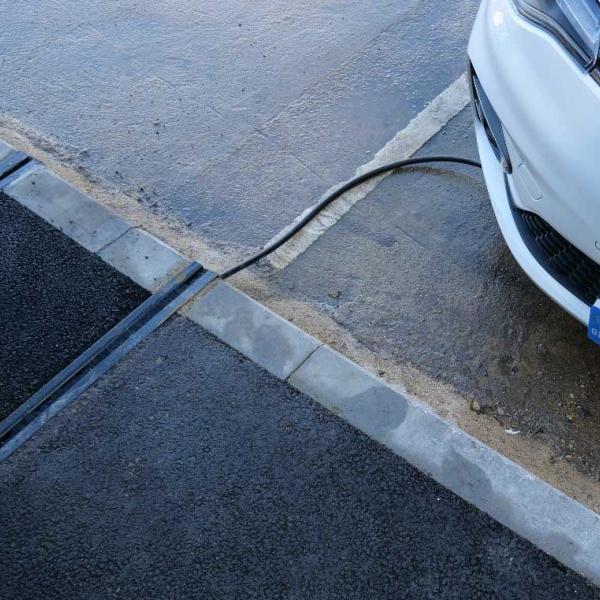Gul-E pilot projects: trialling cross-pavement EV charging solutions in Oxfordshire
Pioneering an innovative EV charging cable channel to allow residents without off-street parking to safely charge an electric vehicle kerbside from their home energy supply.
The challenge
The rapid transition of private cars from petrol and diesel to fully battery electric is a crucial part of the overall decarbonisation of our transport system. But EV charging at home is problematic for people who don't have a driveway. These people must park at the kerbside, and trailing cables can lead to an unacceptable trip hazard that councils—as highway authorities—can't allow.
Cross-pavement channels are a technical solution that allows residents to charge an EV at the kerbside from a home charger without the charging cable causing a trip hazard. The first of these was originally tested as part of the Go Ultra Low Oxford project in 2017 and proved popular with residents.
Although this seems like a simple item of street furniture, the cable channels between private domestic dwellings and the public highway create a complex regulatory and legal environment. This situation needed in-depth exploration to develop a product and delivery process enabling mass deployment. We were uniquely positioned to help ODS (the local authority trading company of Oxford City Council) work through these challenges due to our:
- close connections with highways and planning departments
- experiences with electric vehicle charging
- ability to engage positively with residents
The solution
Between 2020 and 2022, Oxfordshire County Council was part of a consortium with ODS (the local authority trading company of Oxford City Council) that successfully bid for just over £420,000 over two Innovate UK projects to develop and trial 26 Gul-E cable channels around Oxfordshire.
We helped ODS develop and successfully trial the Gul-E solution, including:
- fine-tuning the technical specification for the product and installation to meet highways standards
- developing the most appropriate models for ownership, licencing and maintenance of the cable channels
- researching national and local planning regulations to understand their impact on deployment and how the processes could be simplified
- leading on resident and public engagement, and the delivery and analysis of user surveys
- engagement with central government to influence policy around national rollout
- sharing learnings with other local authorities across the UK and beyond

The best thing about Gul-E is its simplicity. It really is so easy to use, and was a big part of my decision to buy an EV.
The results
Together with Oxfordshire County Council, we are pleased to have led nationally in trialling EV charging cable channels. We took these from concept to tried-and-tested product and service to significant scale deployment in the UK.
Following the success of the Innovate UK-funded trials, Oxfordshire County Council went on to successfully bid for a grant of £700,000 from the central government's Local EV Infrastructure (LEVI) Pilot programme to deliver a large-scale pilot of 500 cable channels across the county. This pilot will be one of the largest rollouts of cross-pavement EV charging solutions in the UK and is designed to prove the business case for EV cable channels as a 'business as usual' offering to the public.
The trials in Oxfordshire have attracted much national—and some international—interest from other councils, all of whom are seeking to solve the same problem of making EV charging as convenient and affordable for residents as possible. If successful, the service launch could be a 'game-changer' for the thousands of residents across the county who would like to switch to EV but don't have access to private off-street parking.
At the same time, Oxfordshire is proud to be working with Motability Operations and their customers to trial cable gullies and assess how we can make this solution—and the application processes involved—as accessible as possible for drivers with additional needs.